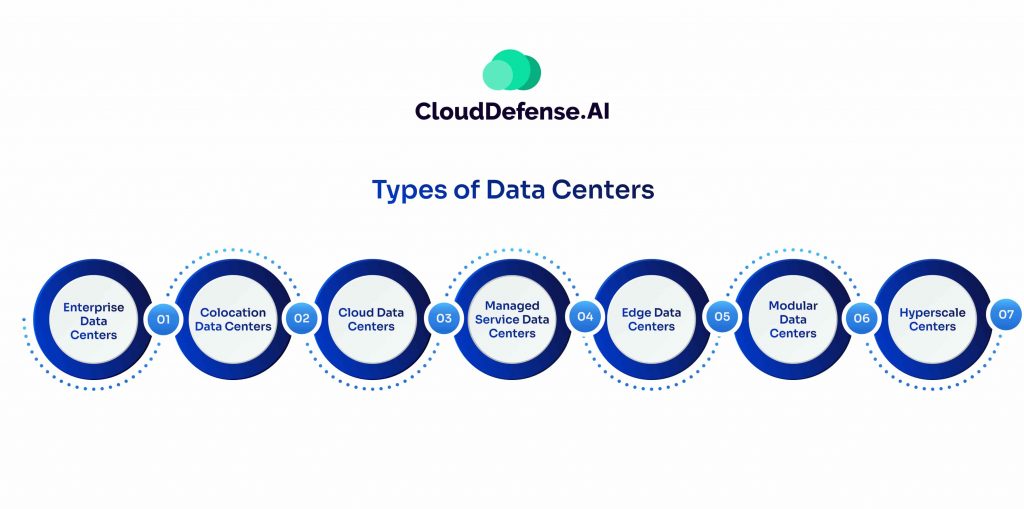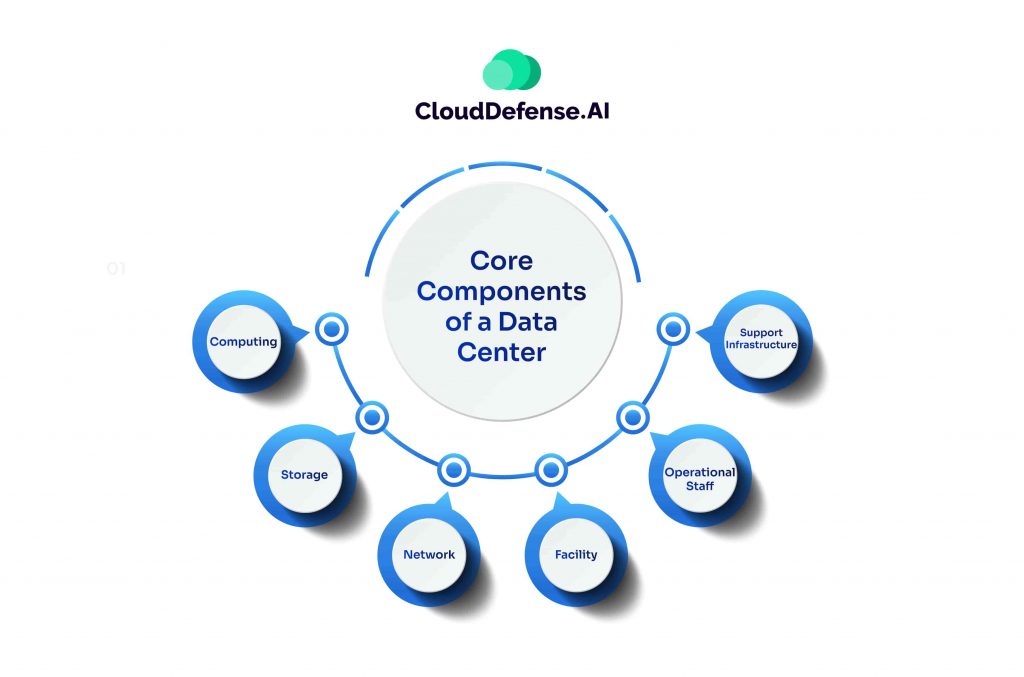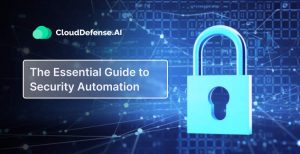A data center is a facility housing servers, networking equipment, and storage systems to manage, process, and store data for businesses, cloud services, and IT operations.
What is a Data Center?
A data center is a dedicated facility designed to house and manage IT infrastructure. It enables businesses to run applications, store data, and deliver digital services.
Traditionally, data centers were on-premises, built and controlled by a single organization to support its own computing needs. However, as technology has evolved, so have data centers. Many organizations now rely on cloud service providers that operate large-scale, remote data centers.
Modern facilities offer virtualized computing, allowing businesses to share infrastructure and benefit from scalability, security, and cost efficiency. On-premises or cloud-based, data centers support websites, financial transactions, artificial intelligence, and big data analytics.
The Role of the Data Center
Data centers are vital in supporting the digital operations of businesses, governments, and cloud service providers. They serve as the backbone for storing, processing, and managing vast amounts of data and ensure seamless access to applications and services.
Modern businesses rely on data centers for hosting websites, running applications, managing databases, and communication. Cloud computing, AI, and big data also depend on the power and scalability of data centers.
Data centers support essential services beyond business applications, including online banking, healthcare systems, and government operations. Their reliability, security, and efficiency are crucial for sustaining the digital economy and ensuring uninterrupted access to critical services.
Types of Data Centers

Not every data center worldwide is similar, as different types of data centers have unique capabilities and features.
Currently, data centers are not only private or on-premises, but there are new kinds of data centers where applications, workloads, and networks are virtualized. Here are some common types of data centers utilized by businesses:
Enterprise Data Centers
This type of data center is one of the largest facilities typically constructed, maintained, and used by a single organization. It is a common choice for most tech giants, and the data centers are mostly located at the organization’s site, where they have optimum power, security, and connectivity.
Colocation Data Centers
It is a widely popular off-premises physical facility that offers shared storage, services, and resources to organizations at a monthly or yearly subscription cost. The service provider rents space and resources to organizations while maintaining the data center infrastructure themselves.
Moreover, they are responsible for installing and managing the data center’s servers, hardware, and firewalls. This service is popular for small—to—midsize organizations that don’t want to make a huge investment in their own data centers.
Cloud Data Centers
Cloud data centers are currently the most demanded data center type worldwide, and public or third-party cloud service providers mostly operate them.
It is an off-premises data center based on an infrastructure-as-a-service model that offers virtualized computing services and resources to organizations over the Internet. Customers can access resources and rent specific services for their business operations.
Managed Service Data Centers
It is a specialized data center where third-party providers offer computing, storage, resources, and other services through a leasing model for IT operations.
A third-party service provider usually manages, operates, and monitors a data center, eliminating the need for organizations to purchase infrastructure and equipment. This data center type is either partly managed or entirely operated by a single entity.
Edge Data Centers
It is a compact data center located closer to the users who rent it. It provides super-fast and efficient access to resources and services.
It helps organizations tackle latency issues and communication delays, which ultimately boost customer experience and service delivery. Usually, these data centers are small and compact, built close to the end user to ensure a low-latency connection.
Modular Data Centers
Modular data centers are specialized and portable data center types that are installed in remote locations with limited infrastructure. These data centers usually come as plug ‘n play data center infrastructure integrated with servers, storage, cooling system, stabilizer, networking, hardware, and UPS.
End-users usually utilize them in building sites or sites requiring recovery or disaster management. Education institutes often use them to develop their IT infrastructure for smart classrooms.
Hyperscale Centers
It is designed to facilitate hyperscale computing for organizations requiring cloud computing and big data storage. This data center type usually serves large-scale cloud providers with robust and scalable applications and storage services to cater to end customers.
They are usually business data centers that help reduce administrative challenges and the cost of cooling. They differ from enterprise data centers in that they utilize a high-fiber network across the facilities. This data center type requires 10,000 sq ft of floor space, 5,000 servers, and 500 cabinets.
Core Components of a Data Center

Data centers worldwide are mostly composed of three primary components: storage, network, and computing. However, these components aren’t the only ones that define architecture; many other components also play a role.
The requirements of components vary from infrastructure to infrastructure, but the primary components remain the same. Here are the core components that make up a data center:
Computing
Servers serve as the heart of a data center, housing all the required processes, networking and memory power for running an application or offering services to end users. They usually come with high-end hardware, including server-grade processes and powerful RAM suitable for artificial intelligence and machine learning requirements.
Storage
Along with computing, data storage is an important part of a data center as it enables the organization to store a large volume of data. Data centers host a huge amount of data for their own purposes and to cater to customers’ needs. Many data centers nowadays use non-volatile storage media to decrease access time and storage costs.
Network
The network of data centers plays a significant role in the smooth operation of the data center. The network component usually includes routers, firewalls, cables, and switches that help connect the server to the internet or other mediums.
When networks are properly configured and managed, it has the capability to cater to large volumes of data without any issues. On-premises networks often use software-defined networking and hyperscale network security to introduce superior agility and scalability.
A network in a data center is composed of core switches that connect to the Internet and a middle aggregate layer, which enables connections between the core layer and the access layer.
The additional components that also add up to the core component are:
Facility
The facility is in a physical location with an optimum power supply and security control to house a data center and its equipment. It is the usable space with designated square footage used to build a data center.
These spaces are designed with optimization so that all the equipment stays under a specific temperature, and the maximum space is utilized during the building.
Operational Staff
These employees are important for any data center as they maintain IT and infrastructure equipment and also oversee the overall operation. These personnel play a crucial role as they make sure everything is running smoothly inside the facility.
Support Infrastructure
Support infrastructure is equipment that ensures the server has the highest achievable uptime and is continuously operating. Usually, a data center tries to maintain availability between 99.671% and 99.995%.
TPSes, power distribution systems, backup generators, electrical switching, ventilation and cooling systems, and network connectivity are the major components of support infrastructure
Data centers usually utilize computer room air conditioners and heating, ventilation & air conditioning for their cooling setup. The video surveillance system and biometrics are also part of the support infrastructure that takes care of the security of the facility.
Data Center Tiers
According to The Uptime Institute, data centers are segregated into four tiers based on their performance, reliability, and efficiency. These tiers are considered to be the industry standard for defining the performance of a data center. Here are the four tiers of the data center:
Tier 1
A tier 1 data center is the most basic type, operating at the base level to support an organization’s IT operations. It usually comes with basic redundancy capacity components like a UPS, round-the-clock cooling system, and engine generator.
It guarantees 99.671% uptime, but it offers limited protection against outages and a downtime of 28.8 hours per year. This type of facility must be completely shut down for maintenance and repair purposes.
Tier 2
Unlike tier 1, tier 2 data centers come equipped with an additional redundant power and cooling subsystem that offers enhanced protection against physical events.
Usually, they equip generators, energy storage devices, pumps, and fuel tanks to minimize disruption impact and improve maintenance. As a result, they provide an uptime of 99.741% and a yearly downtime of 22 hours.
Tier 3
The tier 3 data center can be designated as concurrently maintainable and doesn’t require shutdown whenever equipment needs to be maintained or replaced. Concurrent maintainability is facilitated by the addition of redundant components and disruption, which is also a major differentiator from others.
Since it is mainly equipped, it can protect various types of physical events. Importantly, it offers 99.982% uptime, partial fault tolerance with 72 hours of power outage protection, and 1.6 hours of yearly downtime, which is why large-scale organizations widely prefer it.
Tier 4
Tier 4 is a fully fault-tolerant data center that guarantees a 99.995% uptime and a yearly downtime of 26.3 minutes. These data centers are suitable for enterprises because they offer a 2N + 1 fully redundant infrastructure and 96 hours of power outage protection.
Unlike other tiers, the tier 4 data center features a completely isolated and independent system that helps create a redundant capacity component and distribution path.
This ensures that any kind of disruption, including physical, doesn’t affect the business operation in the tier 4 data centers. Moreover, the equipment is designed with fault tolerance and ensures 24/7 cooling to keep the servers running around the clock.
How Data Centers Operate
Data centers are the backbone of modern enterprises, centralizing IT operations, data storage, and application management. They allow organizations to store, process, and secure vast amounts of data while ensuring high-performance application workflows.
Core Functions of a Data Center
A data center’s efficiency relies on the seamless execution of critical operations, which encompass both physical and virtual infrastructure. These facilities handle immense traffic loads to maintain optimal performance for data-intensive services.
To function effectively, a data center requires robust infrastructure, which includes:
- Hardware & Software – Servers, networking devices, and applications that manage data processing and workflow execution.
- Power & Cooling Systems – Reliable energy sources, including UPS backups and generators, as well as climate control to prevent overheating.
- Security Mechanisms – Both physical and cyber safeguards to protect sensitive data and ensure uninterrupted operations.
Essential Components for Data Center Operations
To maintain efficiency and security, data centers integrate several critical elements:
1. Network Security Appliances: Security is a top priority. Firewalls and intrusion prevention systems (IPS) protect against cyber threats, unauthorized access, and data breaches.
2. Application Delivery Assurance: Data centers employ automated failover systems and load balancing to maintain application resiliency and availability and prevent service disruptions.
3. Physical Security Measures: Advanced security protocols ensure the physical safety of the facility. These include:
- Surveillance Systems: Continuous monitoring through CCTV cameras and sensors.
- Access Control: Multi-factor authentication, biometric scanning, and metal detectors to prevent unauthorized entry.
4. Power Backup & Redundancy: Uninterrupted power supply is crucial for 24/7 operation. Data centers rely on:
- UPS (Uninterruptible Power Supply): Ensures short-term power stability.
- Generators: Provides long-term backup power during extended outages.
5. Computerized Maintenance Management System (CMMS): CMMS enhances efficiency by monitoring maintenance activities, tracking costs, and streamlining repairs. This reduces downtime and optimizes operational performance.
6. Artificial Intelligence (AI) for Optimization: Modern data centers integrate AI-driven automation to enhance efficiency. AI monitors:
- Energy Consumption: Adjusts power distribution to optimize performance.
- Traffic & Cyber Threats: Detects and mitigates security risks in real time.
- Cooling Capacity: Regulates temperature to prevent overheating and maximize efficiency.
How CloudDefense.AI can Help?
As a leading agentless CNAPP platform, CloudDefense.AI empowers data centers with cutting-edge security solutions, ensuring optimal application performance, data efficiency, and the highest level of protection for critical information.
A data center’s security framework must integrate firewalls, access control, data protection, vulnerability management, web application security, and advanced threat detection to safeguard sensitive data. CloudDefense.AI delivers comprehensive, scalable, and AI-powered security to protect against unauthorized access and evolving cyber threats.
Why Partner with CloudDefense.AI?
- Scalability & Adaptability: Seamlessly grows with your data center’s security needs.
- AI-Driven Threat Detection: Identifies and neutralizes risks in real time.
- Automated Security Optimization: Proactively prevents security gaps before they can be exploited.
With CloudDefense.AI, your data center gains unparalleled protection against cyber threats while maintaining peak efficiency. Ready to experience next-level security? Schedule a free demo today to see CloudDefense.AI in action!







